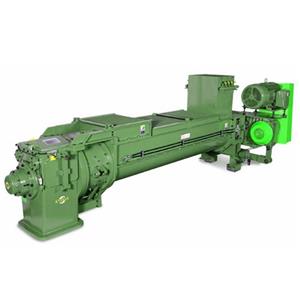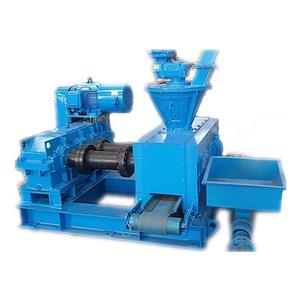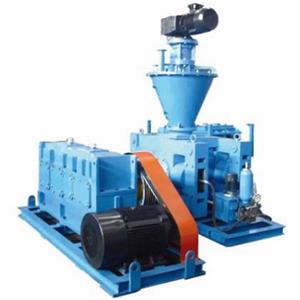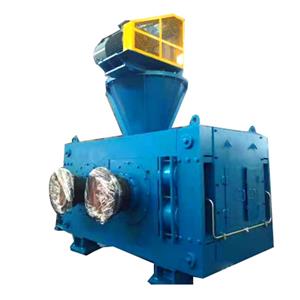Factors Affecting the Quality of Cold-briquetted Pellets
Carbonaceous Pellet Briquetting Technology Carbonaceous Pellet Briquetting Technology, also known as Cold Pressed Pellet Technology, is to make powdered materials in the model under a certain pressure to be pressurized into a block of materials with a certain shape, size, density and strength. The main equipment is generally high-pressure roller ball press. The coal used as reductant for bottom-turning furnace is generally anthracite, with fixed carbon greater than 75%, low sulfur and low ash. Materials (solid waste, iron ore concentrate, etc.) and coal powder, binder, water, etc. in accordance with a certain proportion of ingredients, mixed evenly into the ball press for ball pressing. If the balling effect is not good, the ball into the ball rate is low, the ball falling strength is low, then the material utilization rate is reduced, if the screening is unfavorable, then a large number of powder into the bottom of the furnace, caused by the bottom of the furnace plate knot rises, directly affecting the process of production in line. Therefore, balling has become the key link in the direct reduction of rotary hearth furnace. Factors affecting the balling effect and pellet strength mainly include: moisture, pressure, binder, material size, mixing time and so on.
1. Moisture and pressure
In the balling process, the material particles occur between the close role, this time in the capillary, internal cracks in a portion of the moisture is suppressed to the particle surface, reduce the friction of the particle surface and play the role of lubricant, so that the material particles can be under a certain amount of pressure to achieve a greater density. Moisture and pressure when pressing the ball is corresponding, Figure 1 shows the effect of moisture and pressure on the strength of the pellet when pressing magnetite. When pressing different materials, it is necessary to feel the pressure and its corresponding moisture conditions in order to get a higher balling rate and pellet strength.
2. Binder
Binder is the key factor affecting the pelletizing effect and strength, at present, the use of the rotary hearth furnace manufacturers have mostly developed their own Fig. 1 Moisture and pressure on the effect of magnetite concentrate pellet strength of the production conditions of the binder varieties, such as Laiwu Steel Group organic binder, Panzhihua Iron and Steel using mixed binder, and so on. The relevant institutions are also actively carrying out experimental research to explore efficient and inexpensive binder, such as the University of Science and Technology Beijing related researchers in-depth study of molasses, bentonite, cornmeal and other binders used for ordinary ore and vanadium and titanium magnetite balling when the balling effect and the pellet strength, and got the results of a stage. Pangang turn bottom furnace direct reduction pilot line on a variety of organic and inorganic binder to try, has identified three more optimized binder ratio, in view of the subsequent recycling of vanadium and titanium resources, tends to carry out in-depth experimental research on organic binder, in order to reduce the binder on the titanium slag pollution.
3. Material particle size and mixing time
Material particle size also has a greater impact on the balling process, particle size is too fine material, bulk density is small, the ball strength will be reduced; particle size is too large material, individual particles are large in size, pressing the movement and deformation is difficult, not easy to press; with a certain size composition of the material into the ball performance is better, that is, the fine particles are mainly mixed with a certain amount of coarse particles, coarse particles act as an aggregate, fine particles act as a base material, the size of the particles are different, is conducive to small Particles filled to the pores between the large particles to achieve a close arrangement, the density and strength of the ball increased. Therefore, in addition to maintaining the material has a certain particle size composition, can be raw or dry ball in the sieving process produced by the return material and the new material mixed with the common ballast, return material after a press, the particles are thicker, can be used as a skeleton, practice has proved that the mixture of materials with 5% to 7% or so of the return material, can improve the rate of balling and the strength of the raw ball. Mixing time is short, the material can not be mixed evenly, coupled with the binder and material contact time is short, can not be fully infiltrated, making the ball effect is not good. Therefore, it is generally necessary to ensure that the mixing time of 6 to 10min or even longer, to ensure that the material is mixed evenly, the binder, moisture, etc. fully infiltrated, to improve the effect of the use of binder.




